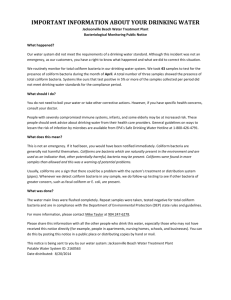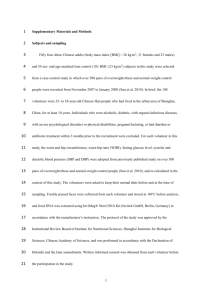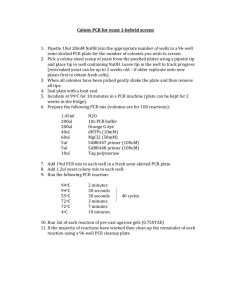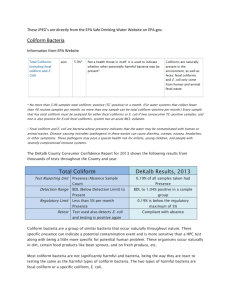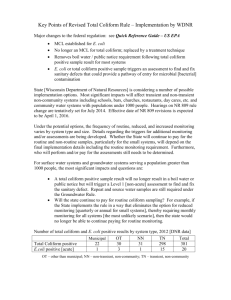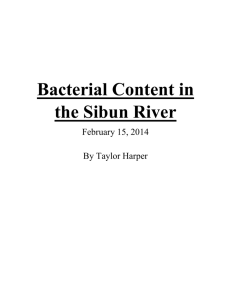4.1.2 Water Analysis
advertisement
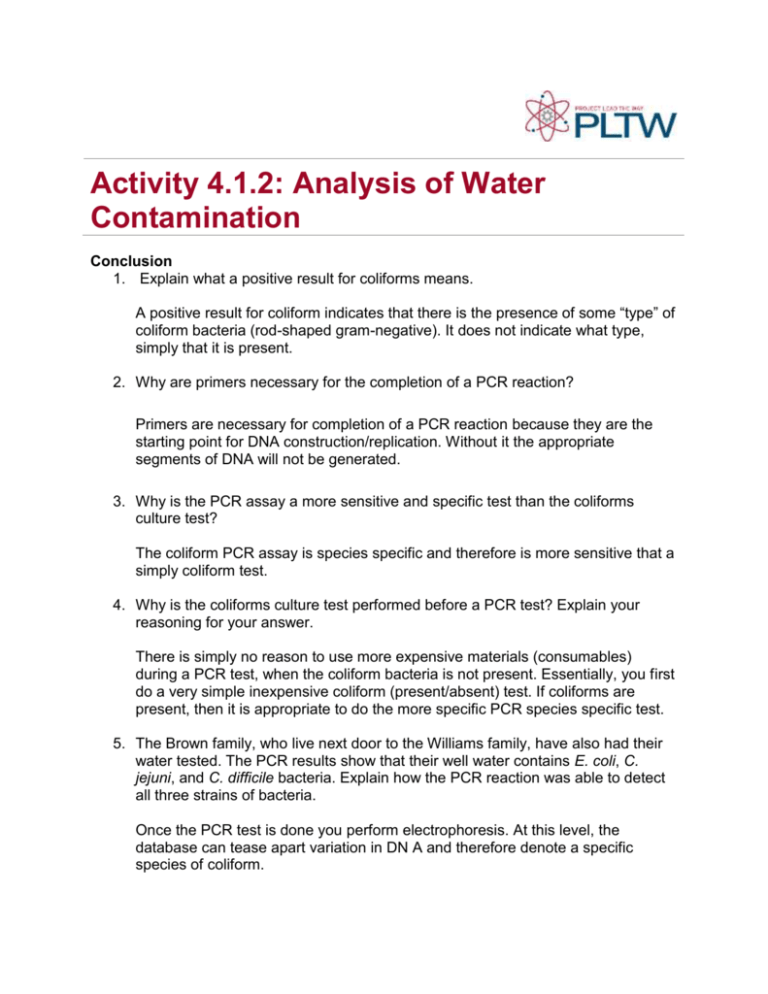
Activity 4.1.2: Analysis of Water Contamination Conclusion 1. Explain what a positive result for coliforms means. A positive result for coliform indicates that there is the presence of some “type” of coliform bacteria (rod-shaped gram-negative). It does not indicate what type, simply that it is present. 2. Why are primers necessary for the completion of a PCR reaction? Primers are necessary for completion of a PCR reaction because they are the starting point for DNA construction/replication. Without it the appropriate segments of DNA will not be generated. 3. Why is the PCR assay a more sensitive and specific test than the coliforms culture test? The coliform PCR assay is species specific and therefore is more sensitive that a simply coliform test. 4. Why is the coliforms culture test performed before a PCR test? Explain your reasoning for your answer. There is simply no reason to use more expensive materials (consumables) during a PCR test, when the coliform bacteria is not present. Essentially, you first do a very simple inexpensive coliform (present/absent) test. If coliforms are present, then it is appropriate to do the more specific PCR species specific test. 5. The Brown family, who live next door to the Williams family, have also had their water tested. The PCR results show that their well water contains E. coli, C. jejuni, and C. difficile bacteria. Explain how the PCR reaction was able to detect all three strains of bacteria. Once the PCR test is done you perform electrophoresis. At this level, the database can tease apart variation in DN A and therefore denote a specific species of coliform. 6. Besides the presence of pathogenic organisms, what other contaminants might be present in drinking water that can be detrimental to human health? It appears that chemical contamination may also be present. It appears that run off may be entering the water supply. It appears that several fertilizer type chemicals may be present (Ammonia nitrogen, Nitrates, and Phosphorus).

